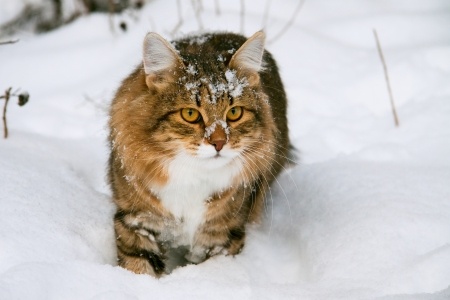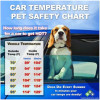Everyone knows that cold weather is hard on people and animals. Read these cold weather tips for your pets – and don’t forget your neighbors’ pets, too!
Although your dog and cat has fur, he or she can still suffer from the effects of cold, including frostbite on the skin of their paws and noses. Make sure that you limit their time out of doors, especially when the temperatures and wind chills are below freezing. If your pet will wear a coat or sweater, by all means put one on.
It is best to keep your pets indoors at all times, but if you care for outdoor cats or (know someone who does), make sure the animals have fresh, dry bedding, shelter from wind and precipitation and fresh water which will have to be checked and replenished frequently when the temperatures drop below freezing.
Remember that ice melting products can be toxic if ingested so make sure that you clean your pets’ paws after a walk so that they don’t eat any of those products when they clean their feet.
Check for chunks of ice that might get caught up in your pet’s paw pads, too. This can be a problem, particularly in breeds that have a lot of hair between their paw pads. You can also invest in dog boots if your dog is the type that will wear them.
Always make sure that you use anti-freeze with care and don’t leave any drips around where your dog or cat can lick them. Anti-freeze is sweet and therefore dogs and cats are attracted to it, but it is deadly. Even a small amount can cause kidney failure and other problems for your pet. Learn more about the signs of anti-freeze toxicity here. And remember that it’s not just cars that use anti-freeze. If you winterize a small boat or cabin, chances are that you are using anti-freeze or something similar, use caution.
Remember that outdoor cats may climb up inside a recently turned off car to absorb warmth from the engine compartment, so if you park your car outdoors, bang on the hood make a loud noise and wait a few seconds before starting your car. You may save a life.




